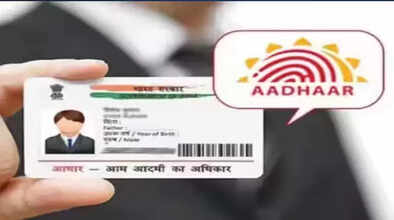Aadhaar Update Rules from November 1: UIDAI Makes Process Fully Digital and Easier for Everyone

Starting November 1, 2025, the Unique Identification Authority of India (UIDAI) will roll out new and simplified rules for Aadhaar updates. These fresh guidelines aim to make the entire process faster, safer, and completely digital—offering citizens the ability to manage their Aadhaar details right from the comfort of their homes.
Under this update, users can modify key information such as their name, address, date of birth, and mobile number without visiting Aadhaar Seva Kendras. The move is expected to save both time and effort for millions of citizens who previously had to queue at physical centers for even minor updates.
A Big Relief for Aadhaar Holders
UIDAI’s latest digital-first initiative focuses on enhancing security, transparency, and convenience in the Aadhaar ecosystem. The goal is to empower cardholders to self-manage their data efficiently and securely, using verified digital documents for authentication.
According to officials, the updated online system is designed to strengthen user control and reduce dependency on manual verification. This change will make Aadhaar services more accessible and reliable, especially for people living in remote or rural areas.
1. Online Aadhaar Update Becomes Easier
Until now, Aadhaar holders had to visit physical centers to make any correction or update. From November 1, all such updates can be done digitally through the official UIDAI portal. Users can log in and verify their details through linked documents such as PAN cards, passports, driving licenses, or ration cards.
This online verification process will be fully automated, ensuring both speed and accuracy.
2. Aadhaar–PAN Linking Deadline Announced
UIDAI has also revised the rules for Aadhaar–PAN linking. As per the new guidelines, it is now mandatory for all PAN cardholders to link their Aadhaar before December 31, 2025.
If this deadline is missed, the concerned PAN card will become inactive from January 1, 2026, which could affect tax filings and other financial transactions. New PAN applicants will also need to complete Aadhaar-based verification during the issuance process.
3. Digital KYC Now Fully Paperless
The authority has modernized the Know Your Customer (KYC) process for banks and financial institutions. Under the new system, users can complete KYC verification through three methods:
-
Aadhaar OTP-based verification
-
Video KYC
-
In-person verification (optional)
This will significantly cut down on processing time for opening bank accounts and other identity-based services. Most verifications will now be completed within minutes, thanks to this streamlined digital system.
4. Revised Aadhaar Update Fees
UIDAI has also introduced a new fee structure for Aadhaar services.
-
Updating name, address, or mobile number: ₹75
-
Updating biometric data (fingerprint, iris, or photo): ₹125
-
Biometric updates for children aged 5–7 and 15–17 years: Free
-
Online document updates: Free until June 14, 2026, after which ₹75 will apply
-
Aadhaar reprint: ₹40
-
Home enrolment services: ₹700 for the first person and ₹350 for each additional family member at the same address
UIDAI’s Message to Citizens
UIDAI has emphasized that the new rules represent a major step toward a “Digital-First India.” The system will allow users to update and verify their Aadhaar data with greater independence, transparency, and control.
Officials have also warned that ignoring the Aadhaar–PAN linking deadline may result in serious issues related to taxation and banking transactions. Hence, citizens are urged to complete the linking process before the cutoff date.
A Step Toward a Seamless Digital India
The new Aadhaar update system not only strengthens security but also ensures inclusivity by reducing the need for physical visits. It aligns perfectly with the government’s vision of promoting digital governance and self-service convenience.
With faster verification, lower costs, and a paperless process, Aadhaar holders are set to experience a smoother, safer, and more user-friendly way of managing their identification records in the digital age.

